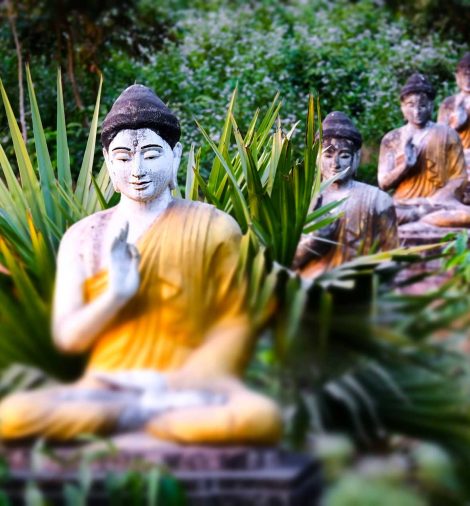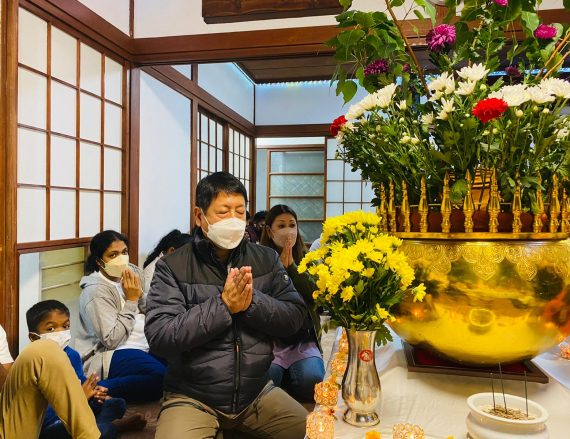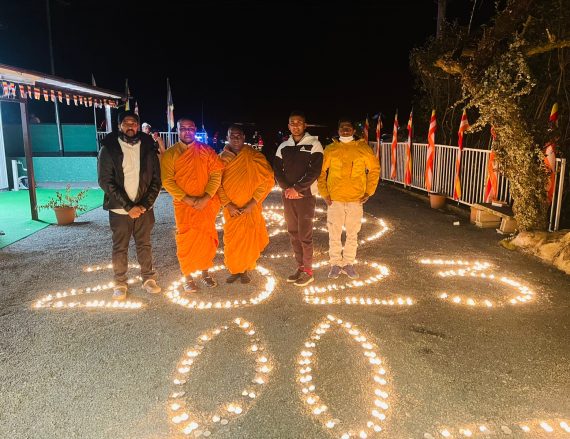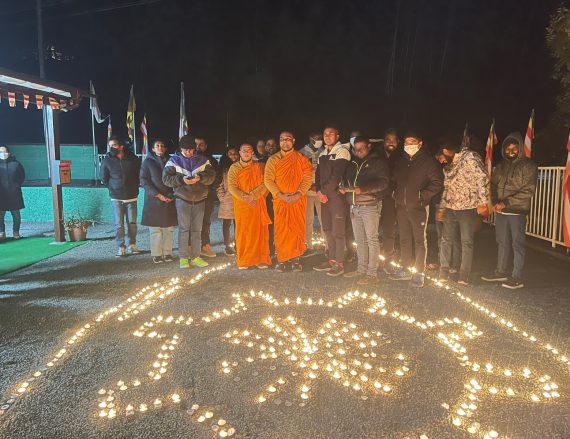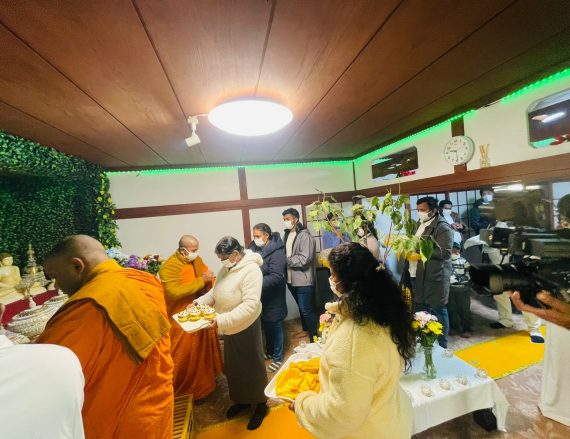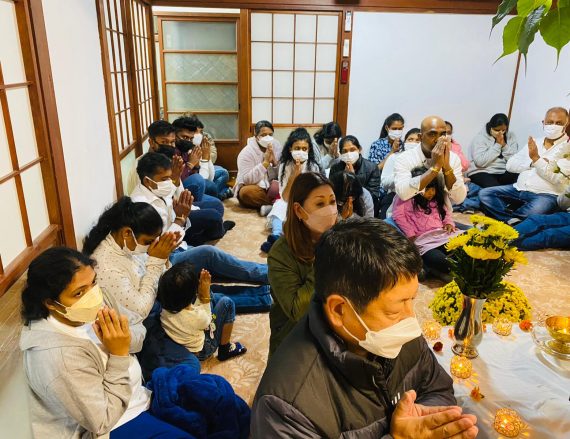Who We Are
Home / Who We Are
Brief Introduction to Buddhism
Buddhism is a religion and philosophy based on the teachings of Siddhartha Gautama, the Buddha (563–483 BCE). Its core aim is liberation from suffering (nirvana), achieved through the Four Noble Truths (the truth of suffering, the cause of suffering, the cessation of suffering, and the path to cessation) and the Noble Eightfold Path (Right View, Right Intention, Right Speech, Right Action, Right Livelihood, Right Effort, Right Mindfulness, and Right Concentration). Principles such as karma, rebirth, and impermanence (anicca) are central to Buddhism.
Brief Introduction to Mahayana Buddhism
Mahayana (Sanskrit: “Great Vehicle”) Buddhism emerged in India around the 1st century BCE and emphasizes the Bodhisattva ideal (a vow to liberate all beings). Mahayana teachings focus on understanding emptiness (śūnyatā) (the interdependent, empty nature of all phenomena) and ultimate reality. It relies on Mahayana sutras (e.g., *Prajñāpāramitā Sutras, Lotus Sutra) and traditions like those of Shantideva’s Bodhicaryāvatāra. Major Mahayana schools include *Zen (Japan), Chan (China), and Pure Land Buddhism.
Brief Introduction to Buddhism
1. Origin and History
– Theravada (“Teaching of the Elders”) is the oldest surviving Buddhist tradition, rooted in the **Pali Canon (Buddhist scriptures in the Pali language).
– It preserves teachings compiled during the First Buddhist Council (483 BCE). During Emperor Ashoka’s reign (3rd century BCE), Theravada spread to Sri Lanka through the missionary work of Mahinda Thera.
2. Core Principles and Teachings
– Four Noble Truths: Suffering, its origin, its cessation, and the path leading to cessation.
– Three Marks of Existence: Impermanence (*anicca), suffering (dukkha), and non-self (anattā).
– Karma and Rebirth: The law of cause and effect governing cyclic existence.
– Nirvana: The ultimate goal of liberation from suffering.
3. Practical Application
– Vipassana Meditation: A practice to develop insight into the Three Marks of Existence.
– *Threefold Training: Ethics (*sīla), concentration (samādhi), and wisdom (paññā).
– Laypeople follow precepts such as the Five Precepts, **Eight Precepts, or **Ten Precepts.
4. Monastic Community and Laity
– The Sangha (monastic community) is central to Theravada. Monks adhere to the Patimokkha (monastic code) and serve society through teaching, meditation, and rituals.
– Lay devotees cultivate merit (puñña) through generosity, **moral conduct, and **meditation, often supporting monks as a virtuous act.
5. The Pali Canon
– Vinaya Piṭaka: Rules and rituals for monastics.
– Sutta Piṭaka: Discourses of the Buddha.
– Abhidhamma Piṭaka: Philosophical and psychological analysis.
6. Geographical Spread and Modern Presence
– Theravada is dominant in Sri Lanka, Thailand, Myanmar, Laos, and Cambodia.
– Vipassana meditation has gained global popularity through modern teachers like S.N. Goenka and Joseph Goldstein.
7. Contrasts with Mahayana
– Theravada focuses on becoming an arahant (one who achieves nirvana), while Mahayana emphasizes the Bodhisattva path (liberating all beings).
– Theravada relies on the Pali Canon, whereas Mahayana uses later texts like the Heart Sutra.
8. Criticisms and Modern Challenges
– Adapting teachings to modernity, education, and technology.
– Debates over reviving the bhikkhunī (nun) ordination (e.g., Sri Lanka’s 2010 ordination revival).
9. Cultural Influence
– Theravada cultures celebrate festivals like Vesak, **Kathina, and **Poson, blending spirituality with tradition.
Main Buddhist Nikayas in Sri Lanka
The main Buddhist Nikayas in Sri Lanka are Siyam Nikaya (1753), Amarapura Nikaya (1803), and Ramanna Nikaya (1865). These Nikayas differ based on history, caste-based social dynamics, and adherence to monastic discipline (Vinaya).
Amarapura Sri Saddhammavamsa Nikaya
This Nikaya is recognized as a sub-nikaya of the Amarapura Maha Nikaya. The Amarapura Nikaya has approximately 21 sub-nikayas,(Mulawamsa parshavaya, Uva Udukida parshavaya, Iddamalgoda parshavaya, Siri Saddhammawansa parshavaya etc) primarily distinguished by caste and regional differences. Also Siri Saddhammawansa parshavaya(sub-sect) to which I belong is currently headed by Siri Seelawisuddhi of Ahungalle and there are 07 vice-leaders. Rev Ratmalane Siri sunitha Maha Thero,Rev Hipankande Saddasiri Thero,Rev Dimiyaya Amarawansa Thero,Rev kosgoda subhuthi thero,Rev thalalle meththananda thero, Rev borelle athula thero. some of them Ratmalane Siri Sunitha Maha Thero is the next leader after chief . The secretary of the nikaya is Siri Sivali of Balapitiya. At present, there are nearly 500 temples belonging to this sect and there are nearly 2000 or 3000 monks belonging to it.
Historical Background
Caste Discrimination in Siyam Nikaya: In 1764, the Siyam Nikaya restricted higher ordination (*upasampada) exclusively to the Govigama (agricultural) caste, marginalizing monks from coastal caste groups like Salagama, Karava, and Durawa. To challenge this, a delegation led by *Ven. Ambagahapitiye Gnanavimalatissa Thera traveled to Burma (Myanmar) in 1799 to obtain valid ordination.
Founding of Amarapura Nikaya: In 1803, the first ordination ceremony under the **Udukukkhepa Sima (a unique floating platform on the Madu Ganga River in Balapitiya) established the Amarapura Nikaya. The name “Amarapura” honors the then-capital of Burma, Amarapura.
Features of Sri Saddhammavamsa Nikaya
Caste and Cultural Influence: This sub-nikaya emerged from the Amarapura Nikaya’s core mission to **oppose caste-based exclusion and empower marginalized communities. It particularly attracted monks from the Salagama caste.
Vinaya Practices: It strictly follows Theravada monastic codes (*Vinaya), emphasizing rituals like ordination ceremonies and temple governance.
Social and Religious Significance
A Lay-Driven Movement: Unlike earlier Nikayas tied to royal patronage, the Amarapura Nikaya was established through the support of **local elites and lay donors, reflecting the rising influence of Sri Lanka’s middle class.
Protestant Buddhism: This Nikaya contributed to a reformist Buddhist movement called “Protestant Buddhism,” prioritizing lay participation and modern education over traditional monastic authority.
Current Status
Amalgamation with Ramanna Nikaya: On 16 August 2019, the Amarapura and Ramanna Nikayas merged to form the **Amarapura-Ramanna Nikaya, creating Sri Lanka’s largest Buddhist monastic fraternity.
Continued Legacy: Sub-nikayas like Sri Saddhammavamsa retain their unique identities, focusing on forest monasticism (*Vanavasi), education, and community service.
Conclusion
The Amarapura Sri Saddhammavamsa Nikaya holds significant historical and social importance in Sri Lanka’s Buddhist heritage. It symbolizes resistance against caste discrimination and reflects the socio-religious aspirations of the island’s rising middle class. Today, it remains a vital force in preserving Theravada traditions while adapting to modern challenges.
